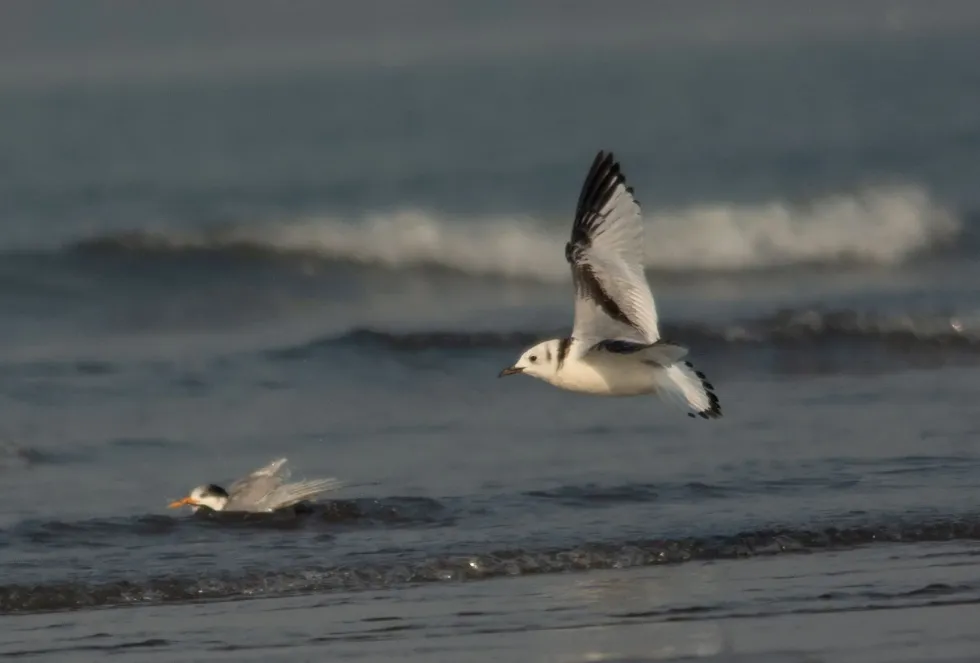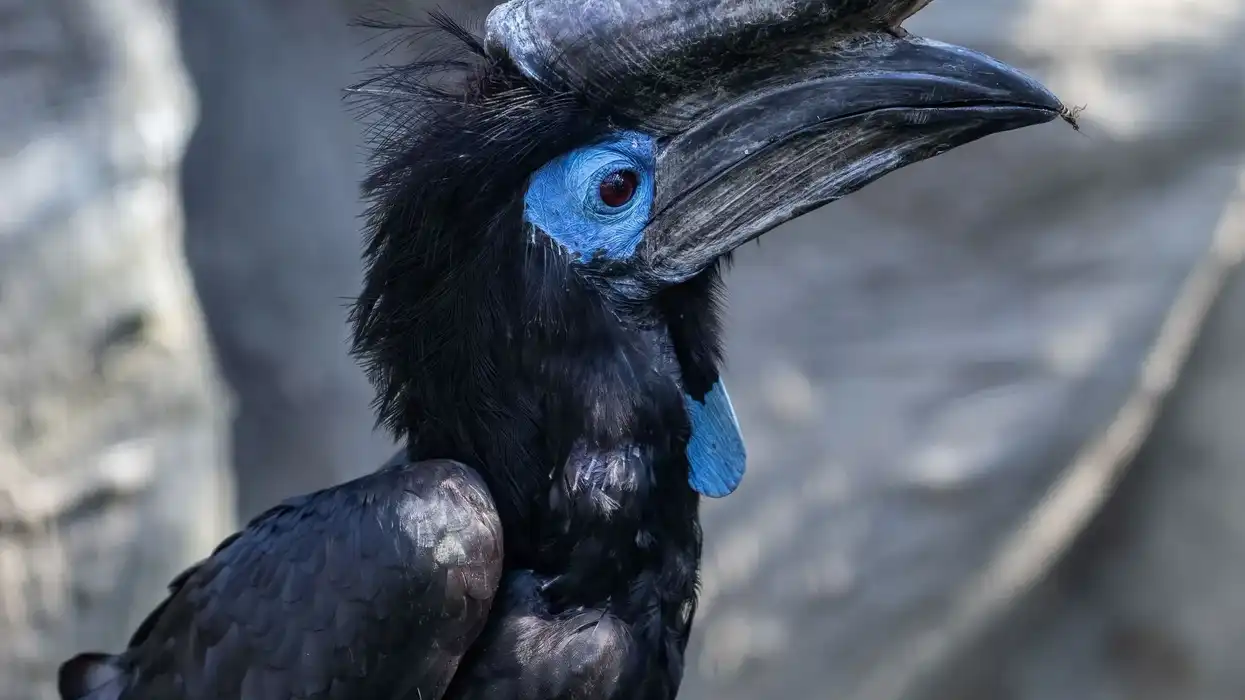Are you fond of offshore and coastal birds? This species of bird is found mainly in the Northern Hemisphere on a cliff or ledges.
A chunk of its population lives on coasts of Northern and Western European countries and in Northern America. These small-sized birds live nearer to the sea, especially in the Pacific and the Atlantic ocean. If you look at the map of North America, you may find it as far in the north as Alaska.
Compared to other gull species, this bird from the Northern Hemisphere doesn't eat from the dump and prefers to prey on the water's surface. It belongs to the order Charadriiformes, family Laridae, and genus Rissa.
The bird is mostly known for nesting in a cliff or ledge present in coastal and offshore areas.
One striking thing about this bird is its look, as it is covered in beautiful white feathers with some black edging and a yellow bill.
The species has a swift flight that helps it catch fish from the water's surface with its bill. Unfortunately, the population of this bird has been dwindling, which has given it the conservational status of being Vulnerable in the IUCN Red List.
For more relatable content, check out these American bittern facts and palm warbler facts for kids.
Black-Legged Kittiwake Interesting Facts
What type of animal is a black-legged kittiwake?
The black-legged kittiwake is a small gull species. A similar bird is the ring-billed gull.
What class of animal does a black-legged kittiwake belong to?
The black-legged kittiwake belongs to the class Aves, order Charadriiformes, family Laridae, and genus Rissa. This genus also contains the red-legged kittiwake.
How many black-legged kittiwakes are there in the world?
According to IUCN, the global population of this bird is around 14,600,000-15,700,000 individuals. Its European population is estimated to be 3,460,000-4,410,000 mature birds. Sadly, the global decline of the population for the bird is said to be around 30-49%.
Where does a black-legged kittiwake live?
When you look at the range map for the black-legged kittiwakes, you will find the bird in places nearer to the Pacific and Atlantic coast. These birds are sometimes thought to be North American birds, but that isn't true.
It has a wide range and can be found on different coasts of the world. Specifically, the population range of North American birds is from the icy places of Alaska to Baja California.
The gull is even found in the Great Banks of Newfoundland, North America. When it comes to North America, the black-legged kittiwake in Florida is also seen. The black-legged kittiwake distribution is also present in the coasts of Norway, Britain, France, Russia, China, Japan, Korea, Central Europe, and Africa.
These birds are mainly found in the northern hemisphere. During migration in the winter season, this bird tends to visit places that have an abundance of food.
What is a black-legged kittiwake's habitat?
The wide range map of the black-legged kittiwake tells us that it prefers dwelling in the open ocean. This species also has a typical way of breeding and nesting in cliffs that are out of reach for most animals and humans.
The gull prefers to stay nearer to the sea coast, where there is an abundance of food.
It is especially found in the open ocean and seen from shore, especially during migrating in the winter months. The birds do move towards more inland areas of the coast habitat during the breeding season.
Who do black-legged kittiwakes live with?
During the breeding season, the black-legged kittiwake is known for living in colonies, and the species create nests near cliffs and ledges of islands and other coastal areas. Some colonies can even have thousands of birds. These sea birds can also form colonies in areas where the Brünnich's guillemot nests.
How long does a black-legged kittiwake live?
The black-legged kittiwake can leave for a long time till 29 years of age.
How do they reproduce?
These are monogamous birds that maintain pairs and nests on the side or on top of a cliff or on ledges. Around 1-3 eggs are laid by the female, and both parents incubate these eggs for up to 25 days.
Both parents also take up the job to look after the nests and the young. It takes 34-58 days for the small kittiwakes to learn to fly above the surface of the water. The maturity age range is around 3-5 years.
What is their conservation status?
According to the International Union for Conservation of Nature, the black-legged kittiwake species is currently a Vulnerable species of this world. Steps have been taken for their conservation.
Black-Legged Kittiwake Fun Facts
What do black-legged kittiwakes look like?
The physical description of black-legged kittiwake is fairly simple as it is a small-sized white and gray bird. Its back and wings have a pearl gray color with darker feathers on the tail.
The legs are black or dark gray. Juveniles look very different and have darker feathers on its wing. However, some birds have yellow or red legs.
This bird has a yellow bill with a greenish tinge. Its bill is comparatively shorter than other gulls. The young will also have black or gray feathers on their nape and crown that are missing in adults.
During the winter months, non-breeding adults may also have some pale gray feathers on the back of their neck, and the bill may appear greener. The immature winter black-legged kittiwake doesn't look very different from the summer months.

How cute are they?
Just like the glaucous gull, the black-legged kittiwake also looks quite cute and adorable. The black-legged kittiwake juvenile looks spectacular while in flight because of its dark gray feathers, which slowly vanish as it turns into an adult.
How do they communicate?
The black-legged kittiwake is known for its 'ki-ti-waak' calls, which sound wonderful, especially when the gulls are in groups. These birds also use calls as a way to greet each other.
The female birds are also known for its squeak calls that it makes before copulation as well as to beg for food from the males. An 'oh-oh-oh-oh' call is also made by these birds when a predator is near.
How big is a black-legged kittiwake?
The average body length of the black-legged kittiwake is around 14.9-16.1 in (38-41 cm). The wingspan of this small gull is between 36–41 in (91–105 cm). Compared to it, the black-headed gull has a body length of 15–17 in (38–44 cm).
How fast can a black-legged kittiwake fly?
The black-legged kittiwake has a flight speed of 33.3 mph (53.5 km/h). When in flight, these gulls like to glide swiftly and alternate it with rapid wing beats. These birds also use flight as their main way of hunting for fish. Hence, the bird will immediately catch the fish after dropping it from its in-flight position.
How much does a black-legged kittiwake weigh?
The average weight range of the black-legged kittiwake is around 10.8–18.5 oz (305–525 g).
What are the male and female names of the species?
There are no different names for the male and females of this family.
What would you call a baby black-legged kittiwake?
A baby black-legged kittiwake is called a chick.
What do they eat?
The main black-legged kittiwake food is fish, and this bird is often found near fisheries. Hence, these birds are carnivores.
Like other gulls, this bird also spends a lot of time on the ocean searching for food. The birds may also eat copepods, polychete, and squids when there is a dearth of fishes. However, the type of fish eaten by this bird depends on its geographical area.
Some common fishes that these birds prey and feeds include capelin, sand lance, pollock, arctic cod, saffron cod, young salmon, and small trout. Unlike other kittiwakes, this bird feeds from the surface of the water rather than from dumps.
Are they poisonous?
No, the black-legged kittiwake isn't a poisonous bird.
Would they make a good pet?
As a vulnerable species, this bird isn't the best pet for someone. The black-legged kittiwake prefers to stay in offshore areas of the world and near cliffs that are away from human reach.
Did you know...
The name kittiwake is pronounced as 'ki-ti-waak', and it comes from the bird's wonderful call.
The kittiwake can simply be referred to as a gull rather than as a seagull. It should be noted that even though gulls like near oceans, the birds may not be exclusively found near seas.
This bird belongs to the Laridae family that contains gulls, terns, and skimmers.
When young, the bird is also known as tarrock in Northern Scotland.
Are black-legged kittiwakes endangered?
In the IUCN Red List bird guide and field guide, the black-legged kittiwake is currently classified under the status Vulnerable, even though this bird is yet to be endangered.
What does a black-legged kittiwake look like?
The black-legged kittiwake is a small-sized gull that is covered in white feathers and has gray feathers on its wings.
Here at Kidadl, we have carefully created lots of interesting family-friendly animal facts for everyone to discover! For more relatable content, check out these sanderling facts and Arctic tern facts pages.
You can even occupy yourself at home by coloring in one of our free printable black legged kittiwakes coloring pages.









